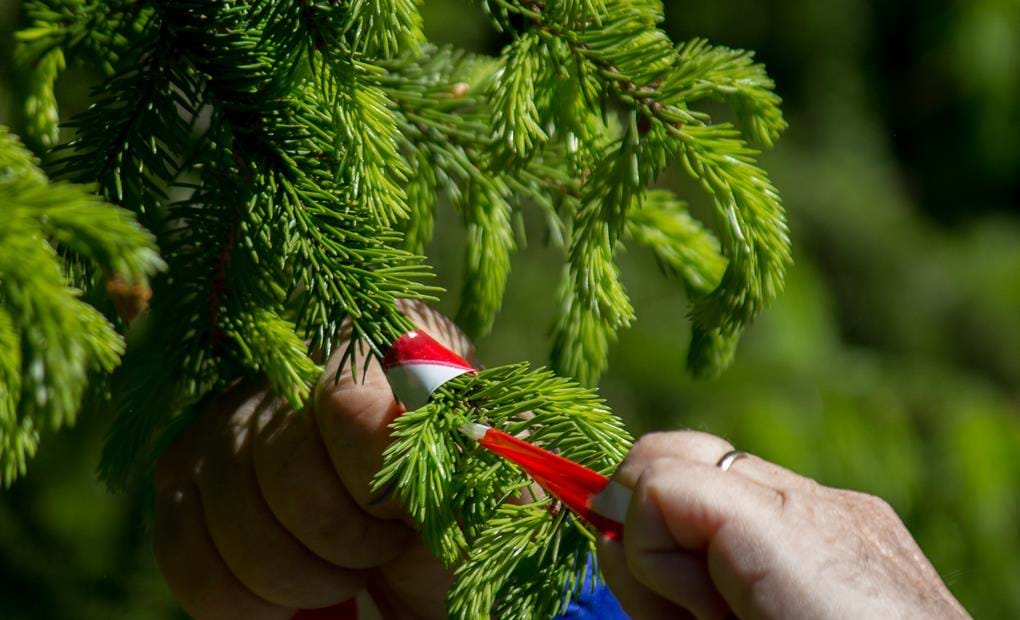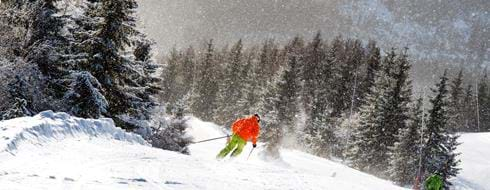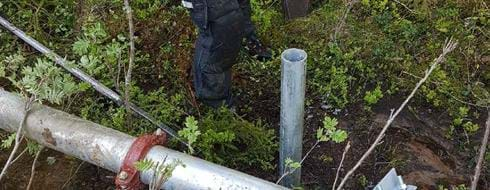How to build a slope.



Among the criteria that are fundamental when it comes to the slopes at Romme Alpin there are fall line, variation, experience and structure. When we will open for the 2018/19 season, there will be 33 slopes for you to ski on. Ever wondered how a slope is built? This is how we do it here at Romme Alpin:
For several months Bo Funcke, CEO of Romme Alpin, takes long walks up and down the prospective slope. In his backpack he carries barricade tape in various colours, measuring instruments and one of the many maps he works with on a daily basis.
- I dedicate a lot of time to a new slope. The whole process begins in my head a few years before I even start sketching a potential outline for a slope. There are many factors that need to be taken into consideration. For example, what degree of difficulty I want that slope to have, in relation to the possibilities that the mountain naturally offers. When I get to the drawing board, I usually sketch different options considering the map's height curves, rocks and water streams. The most important thing is to find the fall line, so that the slope will offer a comfortable and smooth ride. This can easily be done just by looking at a map, but the reality is different. It is only when I go up on the mountain and start walking the area that I can definitely decide whether there is the actual possibility to build a slope where I had planned it.
As a former orienteering athlete, Bo navigates the forest smoothly. He is trained at reading maps and can easily apply the information to the reality. The first step in the creation of a new slope is to mark the centre of the slope, the centre line. You mark the outline by tying the red and white striped tape on the trees about every 15 metres. The you proceed marking the outer edges of the slope on both sides in the same way.
- When the centre line is marked and after it has been adjusted a few times, I can start measuring the planned width of the slope. If I then see that it is not possible to follow my original planning, I go back and do some more adjusting to the measurements. The most important thing is that I always follow the fall line, in order to avoid creating a slope that lies obliquely. I am also very careful to select to keep the right trees on the sides of the slope. The best ones are bushy firs with branches all the way down the trunk. They reduce the risk of accidents and give a much nicer feel to the place than the long and straight pines.
Bo's explorations and tree markings go on for several months; making adjustment after adjustment. In the end the number of ribbons of barricade tape marking the future slope's center line, outer edges and tree trunks amounts to over 300.
- Sometimes our guests may get the impressions that we forgot to remove some trees in the process, but all our 260 groves are planned to be where they are, and they are there for a reason. If there are trees in the middle of our slopes, our customers need to be aware of them. You cannot just go as fast as you can on every slope. If there's a tree you need to slow down and adjust your speed. Besides, the groves give the whole slope experience a further dimension.
Bo stresses several times upon the importance of creating experiences, that the slopes should be both exciting and engaging. For example, you should not be able to see where the slope ends when you're up at the start. Furthermore, you should get a new view around every corner or behind every grove. You should be able to glide down going from side to side without problems and even change slope without having to scream “Out of the way!!”
- The fall line is oftentimes not straight and therefore the slopes need to naturally bend. I have spent so much time designing the curves because I want our ski resort to be well designed. This is a choice that draws inspiration from the many visits I took to ski resorts in the United States. I have been skiing there many times myself and there are many resorts there where I believe they have succeeded in creating a true skiing experience, which is also my goal for Romme Alpin. Having a variety of different slopes, you have the opportunity to get a new skiing experience at every ride. So, you are not forced to only ski down the same slope the whole day.
Building a slope following all of Bo's criteria takes, as you may have guessed, quite some time. Once all the striped tapes are tied around all the right spots, the clearing of the forest begins, and all the materials are in some way reused. The logs and sticks are used for burning, while the stumps, roots and rocks will be used as filling materials. Since the terrain is inaccessible, it is not possible to get soil or other construction materials delivered.
Therefore, the slopes are made with the materials found in nature. At this point we're about five years away from the first sketches on the map done by Bo in the first stages of the planning of a new slope. When the land preparation job is completed, all the piping for the snow cannons are hauled, put into place and the underground water drainage system is completed. If required, lift stations and pillars are built. It is only then that we are finally ready for the cold and the snow to come.